 “Salad is my favorite” said no child ever. (Or most grownups for that matter!)
“Salad is my favorite” said no child ever. (Or most grownups for that matter!)
Don’t most of us wish that were the case, though?
Don’t you wish our cravings are for avocado and watermelon instead of candies and sugary treats?
That we wouldn’t be scraping creamed spinach from dinner plates into the trash can, again?
When I was pregnant, I had fantasies about how perfectly I would parent. I would be like June Cleaver or Donna Reed. Hair perfectly coifed, house spotless, skirt swishing as I presented perfectly balanced meals to my family who would look up at me joyfully and say, “Boy, I sure do love your lasagna!”
In reality, my hair was in a ponytail, I was in yoga pants for the 23rd day in a row, and I was close to tears begging my toddler to please, please, try just a tiny bit of broccoli. He, however, sat there with arms crossed and lips sealed as resolute as a pharaoh. He was NOT going to put that green stuff in his mouth.
Why do we put ourselves through this! Why is getting our families eating healthier so important?
Many of us already know that poor childhood diets can set the groundwork for many adult diseases such as osteoporosis, type 2 diabetes, and heart disease. But it can also affect kids in the classroom. A study by the NIH in 2008 showed that children who have unhealthy diets don’t experience the same levels of academic achievement as their classmates who do eat healthily.
It’s so important that former First Lady Michelle Obama made improving the quality of school lunch her mission during her tenure in the White House. Celebrity chef Jamie Oliver started the Food Revolution and tried to get schools and communities all over the world to change how they feed children.
It took a while, and there were times I would have paid them $100 to eat a tomato, but over the years, we’ve made a lot of progress. Now my kids love fruits and vegetables. When they want a snack they grab carrots, celery, or an apple. My husband and I are eating healthier too.
Here’s a quick compendium of the 20 ways that I learned along the way to get my family to be healthy eaters.
1. Start As You Mean To Go On
It’s an oldie but a goodie. It means to do things the way you want to do them from the get-go.
If you want your family to eat a variety of healthy foods, you need to start them on a variety of healthy foods from the very beginning. Don’t be discouraged by hiccups along the way. Food that was their favorite one day will be treated with disdain the next. That is completely and frustratingly normal.
Take that moment to pick another healthy food to introduce.
2. Cut the Kids’ Menu
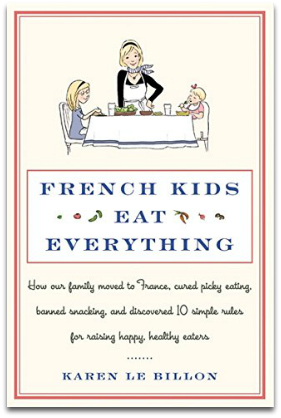 In her book, French Kids Eat Everything
In her book, French Kids Eat Everything, Karen Le Billion points out that in France, all children and babies eat what adults eat. One meal is made, and it is served to everyone at the table. Flavors and textures aren’t “dumbed down.”
You, as the parent, are in charge of teaching and guiding your children to eat like an adult.
3. Plan Ahead
A little menu planning goes a long way to making eating healthier an easy task. If I take 10 minutes to plan our meals for the week, I don’t have to rack my brain for ideas after a long and draining day at work.
Plus, it streamlines my shopping, so I spend less time wandering through the aisles. Or you can investigate your local grocery delivery service options which have certainly expanded in recent years.
I use a delivery service about twice a month. I plan out my meals and then I plug in my order in the evening while sipping wine in my jammies and sitting in my favorite chair.
I can then avoid trips to the store when I am so exhausted and frozen pizza seems like the only thing I feel capable of making and sodas and chips are calling to me from their shelves.
4. Junk the Junk
As a teen, my brother and his friends would descend upon the kitchen like locusts and when they were done there was nothing left but wrappers.
They weren’t thinking, “Is this good for me?” They were thinking, “Fooooood!”
Bags of chips were eaten without a thought. However, if there were apples cut up or some slices of zucchini bread, those were also devoured.
This showed me that if sodas, chips, and cookies aren’t in the cupboard, there is no choice about eating healthier.
5. Fill the Fridge!
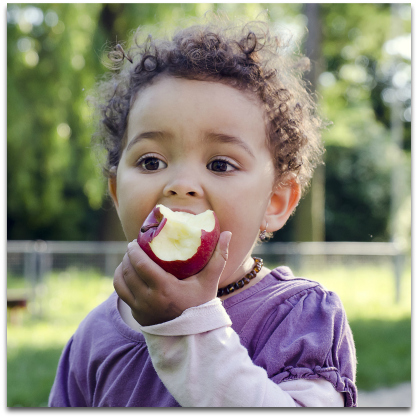 Adults, teens or children – we automatically snack on whatever is in front of us.
Adults, teens or children – we automatically snack on whatever is in front of us.
Load up the refrigerator with ready-to-go snacks.
We keep a container of celery and carrots – peeled, cut-up, and ready to eat – in the fridge at all times. Keeping them in water keeps them crisp.
Slices of turkey and cheese sticks are in the meat drawer. The fruit drawer is loaded with berries, apples, and oranges. Ice-cold water chills in the fridge in lieu of sugary soda or juices.
6. Redefine “Snacks” and “Treats”
When you think of a snack what springs to mind? What do you consider treats?
In our society snacks are a regular part of our daily eating. We rely on snacks to keep us fueled up throughout the day, so it makes sense that we treat snacks as a mini-meal.
Treats are high in sugars and low in nutrients. They are foods that we shouldn’t (and really can’t) rely on to fuel our bodies.
Make this distinction clear and ensure that anything you snack on a regular basis is healthy and save the unhealthy indulgences for special occasion treats.
7. Embrace a “New Food” Chart
When our 3-year-old Evan refused to eat anything but grilled cheese and hot dogs for 3 months we racked out brains for what to do.
Eventually we created a “New Food” chart.
Being a goal-oriented child, this worked like a charm for Evan. Every time he had 3 bites of a new food, he got to put a stamp on the chart that hung on the refrigerator. After 5 stamps he earned himself a cupcake.
It took us a month to get to our first 5-stamp reward. The minute he put that 5th stamp on the chart I took him to the bakery where he got a chocolate cupcake with strawberry frosting.
After that he was hooked.
We were at the bakery once a week and he was searching for new foods in every meal.
After a while we stopped mentioning the reward and he eventually forgot to demand it. By then he was eating over 30 new foods and trying more.
8. Eat the Rainbow
 We were having dinner with my friend Karen and her family when she asked her boys, “Have you eaten the rainbow today?”
We were having dinner with my friend Karen and her family when she asked her boys, “Have you eaten the rainbow today?”
At first, I thought she was making some kind of Skittles reference, but I could not have been more wrong.
Eating the Rainbow means to eat a food of every color every day. Each color group shares common vitamin and mineral groups, so they get a little bit of everything nutritionally.
Plus, it’s a way to get them to look at what they are eating every day and see what is really on their plate.
9. Talk to Yourself
“The way we talk to our children becomes their inner voice.” Peggy O’Mara’s quote was put into memes and zipped around the Internet.
It turns out our children’s inner voice isn’t just what we say to them, but also what we say around them.
My Mom would constantly talk herself through making dinner. “Okay, green beans are the vegetable and potatoes are my starch. Where is my protein?” When dinner hit the table she would point to the different dishes tick through her mental list, “Fruit, veg, protein, starch, dairy.”
My brother and I thought she was crazy, but I ended up carrying on her habit of having nutritional conversations with myself. My children probably think I’m crazy too, as I swan around the kitchen talking myself through making dinner.
But I know that what I am saying about food will become my boys’ inner voice when they are older. When they are out on their own, they too will tick through their mental list of “Fruit, veg, protein, starch, dairy.”
10. Hide the Yucky in the Yummy
Even when they were rebelling against vegetables, the boys were still eating pizza and pasta with sauce.
Jamie Oliver’s recipe for ‘Full of Veg’ Tomato Sauce seemed like an answer to a prayer. It has 7 different vegetables in it and blending it up not only hides all those vegetables that my children would never, ever eat, it also makes it a smooth and thick consistency that is perfect for pizza sauce and is terrific on pasta.
The boys love it and I have taken to making it with whatever veggies I have on hand. It also freezes and reheats beautifully, so I always have some on hand.
Smoothies are another great way to hide suspect fruits and veg. Plus it delivers dairy protein (through Greek or regular plain yogurt) on top of vitamins and minerals from things like bananas, strawberries, blueberries, and honeydew melon – even cooked butternut squash.
11. Put It On A Stick
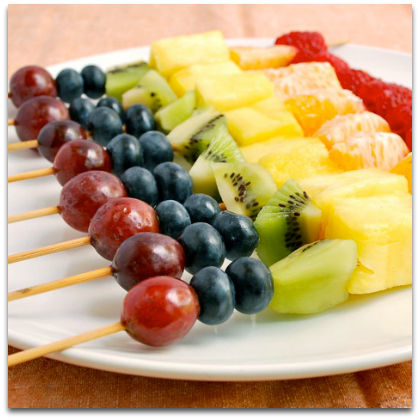 Who doesn’t love things on a stick?? It’s like being at the State Fair!
Who doesn’t love things on a stick?? It’s like being at the State Fair!
And you can put anything on a stick. We still love having honey and soy marinated salmon kebabs from the book First Meals by Annabel Karmel.
The kids are thrilled to find salami and cheese skewers in their lunches and fruit kebabs are a favorite after school snack and party food.
12. One Polite Bite
My friend Audra tipped me off on this little rule.
It’s one of the few dinnertime rules we have, but I don’t know what I would do without it.
Everyone must take one polite bite of everything on his or her plate. They aren’t forced to eat it all and it doesn’t have to be a big bite, but they do need to try it.
This is important because tastebuds change. They grow and mature and flavors will taste different as the children get older. One day, they might find that they really do like olives.
It not only helps them to get use to other flavors and textures, but it also teaches them manners that they carry to meals at their friends’ houses.
13. Cameo Appearance
In the midst of trying to get our picky eaters to expand their diets we talked to our pediatrician. He encouraged us to keep putting one or two little bites of the foods they wouldn’t eat on the plate.
It may take 50 times, but eventually (especially if you use the One Polite Bite rule) they will develop a taste for it.
And it worked! One day we noticed that they were eating their green beans – and loving them – without us saying a word.
14. It’s A Family Thing
 We have family dinner. All of us are there sitting together. No phones. No technology. It not only gives us a chance to connect with our children, but we as parents can also model what it looks like to eat different foods.
We have family dinner. All of us are there sitting together. No phones. No technology. It not only gives us a chance to connect with our children, but we as parents can also model what it looks like to eat different foods.
We talk to them about what they are eating. We tell them the family history of the dishes, the foods in it, and the culture it came from. We educate them about food, among other things.
It gets harder as they get older and have more late-night activities but having dinner together at least 2 or 3 times a week can do wonders for teaching teens about eating healthier. Plus, when they see you eating healthy, they will think the eating healthy is just something people do.
And take your time!
A meal is not something to plow through so you can get to the next event. Dinner IS the event. Here in Switzerland, we have found that as we slow down and keep the boys at the table, they try more things. It’s almost like they forget they aren’t fond of raw cabbage and just start munching on it as we enjoy each other’s company.
15. Bento Boxing!
The Bento box, or Obento, has deep Japanese roots.
The word “obento” actually means “lunch.” Japanese bento boxes are attractive, fun, and invite the children to eat. The craze came to America about 20 years ago. An easy Internet search will show you pictures of sandwiches that look like rabbits, rice balls with faces on them, and veggies and fruits cut into fun shapes. JustBento is a great site for inspiration and instruction.
I have to admit that there is no way I could recreate a lot of bento boxes I see on Pinterest. However, I do use a lot of tips to make the meals as attractive as possible. Now the boys get star shaped melon pieces with blueberries in a silicone muffin cup, raw veggie sticks in another cup, and couscous with slices of cherry tomato and shreds of roasted chicken in the larger compartment.
And they gobble it all up with glee!
16. Set Your Oven to BRR!
Broiled, Roasted, or Raw.
The family just won’t eat pan-fried chicken and steamed vegetables? Try broiling or roasting. Broiling gives you a pleasing grill-like flavor and texture to your food. Fish is perfect for experimenting with broiling and it’s ready in 5 minutes!
Roasting’s dry heat crisps up the outside to give food – both meats and veg – a nice crunchy texture with a moist and sweet inside.
Or, just shut off the oven! Raw fruits and veggies are delicious and often children prefer their veggies raw. We got Evan to eat carrots because we turned it into a “who can make the loudest crunch” contest.
We also routinely have a cheese platter meal where I serve different cheeses, meats, and artisan breads along with raw fruits and vegetables. There are never leftovers and barely any clean up!
17. Get the Kids Involved
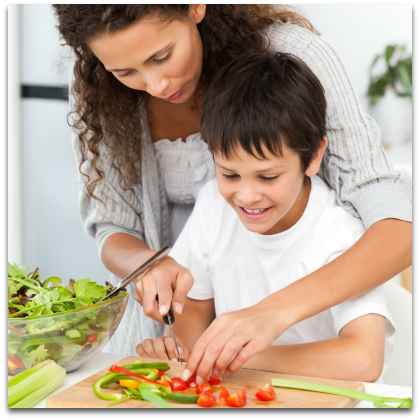 A study by the University of Alberta found that when kids help prepare and cook the meal, they are more willing to eat it.
A study by the University of Alberta found that when kids help prepare and cook the meal, they are more willing to eat it.
The NIH has a great pamphlet with suggestions of age-appropriate kitchen tasks to help get kids as young as 2 years old involved in cooking.
For young kids or kitchen novices I recommend taking a Saturday or Sunday to start getting your kids involved. You have lots of time to teach them kitchen safety and the basics of how to cook. Pizza and salad are great first meals for kids to make.
For years my cousin used her Sunday family dinner times to train her kids to cook. Now she has her middle school-age children each taking a night to plan a meal and cook it for the rest of the family. They love feeling like they are contributing to the family and trying out new recipes; and she loves that she only has to cook 3 nights a week!
18. Get Critical
Evan and Henry love to play Food Critic at dinner, just like a judge on one of those cooking competition shows. I ask very seriously for their opinion, and they very seriously give it to me.
What do they think of the meal? Is it salty? Sweet? Savory? What about the texture?
They are more than happy to taste it and give their opinions. Plus, it educates their palates and they become more sophisticated eaters.
19. Stay Strong
There will come a day when your child absolutely refuses to eat the meal you put in front of him.
Instead of making him a whole different meal, point out all the things they do like that are being served. Maybe you have fresh apple on the side. Maybe they like the slices of carrots in a salad. And the meat in the stew is just like all the other meat they eat.
An occasional small or skipped meal won’t hurt him, but giving in and making a separate meal sets you up to be a short-order cook in the long-term.
20. Don’t Force It
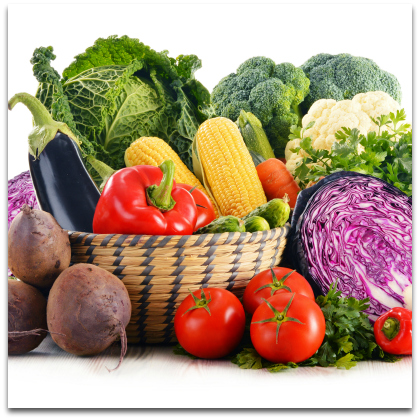 Just like you don’t like every food, your child isn’t going to like every food, either.
Just like you don’t like every food, your child isn’t going to like every food, either.
If they really set in their heels and refuse, don’t force it even if you do have the One Polite Bite rule. Dr. Spock emphasizes that forcing children to eat can push them into refusing on principle and before you know it you are locked into a battle of wills that you can’t win.
Let go of the worry that they aren’t eating your perfectly roasted chicken and instead engage them in the dinner conversation.
We are a family of healthy eaters now. It has been an evolving process that has changed the way my husband and I eat as well.
Evan seeks out proteins and vegetables when he is hungry. Henry looks forward to fruit and dairy in his snack box.
Are there still foods that they refuse to eat? Yes. We continue to work towards having kids who will eat anything. Their food education is only beginning!
The 2-Minute Action Plan for Fine Parents
Take a quick minute and head into your kitchen.
- What kinds of foods are in your kitchen? What foods are the most accessible to your kids? Are there some healthy options you can make more accessible or enticing to eat?
- What healthy foods do your family members like? What foods do you want them to like? Make a list and keep it handy so you can incorporate known food likes with foods they don’t know yet into your meal planning ideas.
- What do you have planned for your next meal? Could it be healthier? Are there new foods you could introduce? Can the kids help with some of the cooking or prep work?
The Ongoing Action Plan for Fine Parents
The key to success is to make eating healthy as easy and decision-free as possible.
- Make a meal plan for the week. Are there meals you can include that will encourage your kids to get involved in the kitchen?
- Investigate your area’s grocery delivery options. It will free up at least an hour of your time each week and stop you from buying impulse items.
- Think Out Loud – Whether it’s asking them if they’ve eaten the rainbow or pointing out what categories of foods they have on their plate, when you think out loud your voice becomes their inner voice when they are older.
I am confused. Tip 2 states don’t dumb food down and tip 10 states to wizz it up so the kids don’t know what they are eating. Which way am I supposed to go?
When possible don’t dumb down the food. Serve whole and recognizable foods and encourage them to try them. But there are times when you need to pack as much nutrition as possible into food items they *will* eat. I will absolutely take advantage of the fact that I can blend up about 7 or 8 different vegetables together and they will eat it and they are getting the vitamins and nutrients they are missing out on elsewhere.
thank you . I have tried all of these things with very little success. I continue to try, but am so frustrated. My child is a texture eater. He will not eat anything that isn’t crunchy and dry. He also will simply refuse to eat anything if there isn’t anything on the table he “likes”.
I’m just tired and worn out. Especially because I do eat healthy and model it every day- yet that doesn’t seem to catch on for him.
I have a friend who’s son is a texture eater like yours. He has other issues as well, so she went to the Kennedy-Krieger Institute for help. They did some therapy sessions with him and then told her to have eating sessions with mushy food – like apple sauce, pasta, etc – and every time he took a bite to give him 5 minutes of his favorite activity. He happened to like playing music and watching a particular video. So he would have a bite and then get 5 minutes of his video or his music. Then she would shut it off and give him the chance to continue with another bite. And it worked! It took awhile, but with the support of the food therapist, she was able to get him to eat foods like bananas, apple sauce, and pasta.
Of course, if this doesn’t work I would suggest you ask your pediatrician for some suggestions, too. They have loads of scientific and anecdotal solutions and suggestions for you.
Thank you for your reply Malinda. What is the Kennedy-Krieger Institute? If there is a similar program here in Albuquerque, NM, I’d be eager to try it. We’ve struggled with this now for years and it just doesn’t seem to be getting better. I’ve read many books with suggestions and tried them all. So I would be happy to get some therapy for him. When I talked to my pediatrician about it, I wanted to scream because his suggestion was “just put out fruit and vegetables for snacks, when he’s hungry and there’s nothing else, he’ll eat it.” Oh really?! Of course I’ve tried that- my son is happy to go without. In fact, I’ve seen him go for very long periods of time without eating. I’m not sure how that works for him. Anyways, thank you for your advice and thoughts. I’m just frustrated and specifically with doctors and “experts” who act like all children respond the same to food.
The Kennedy-Krieger Institute is located in Baltimore, Maryland. They work with children that have be diagnosed with any variety of development disorder or disability – from learning disorders to sensory processing issues to Down’s Syndrome.
Here is a link to their page on feeding disorders. http://www.kennedykrieger.org/patient-care/diagnoses-disorders/feeding-disorders
At this link you will find the Referral Guide for nutrition specialists in New Mexico. http://www.envisionnm.org/xpdf/New%20Mexico%20Pediatric%20Nutrition%20Referral%20Guide.pdf
There is nothing more frustrating that having a child who will not eat the food he needs. I really hope that one of the places on the guide can give you and your son the help you need for his feeding reluctance.
Hang in there! Even if it doesn’t feel like it, you are doing great.
Thank you Malinda. This is such a helpful article – I’ll be using quite a few of these tips. Will be trying Jamie’s tomato sauce recipe and checking our bento boxes and well as fruit on a skewer as a start 🙂 thanks again
I love how you’ve picked a few specific tips to get started with, Tracy. When I see a list of tips like this, I think I have to try several, but immediately forget about all of them unless I pick 1 or 2 specific ones to try. In our case, we’re trying the “One Polite Bite” rule…
I also love that you’ve picked a few specific things to start out with! The fruit skewers are such a fun way to present fruit to a child. You will not be disappointed by Jamie’s sauce. It is such a huge hit here with my boys and all their friends. And have fun with those Bento boxes. I love that they give me a creative outlet as well as encourage the kids to eat up their lunch.